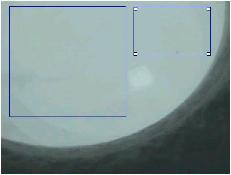Overview

|
The Canty Vision System is positioned on a glass bottle production line to monitor and control the glass gob volume and temperature. A glass gob is a still drop of molten glass formed by cutting a stream of glass as it flows from the forehearth (shown in figure above) through a feeder of variable diameters. These gobs free fall into molds and create glass bottles. The volume and temperature of the gobs are critical to quality control and with the Canty Glass Gob analysis system all of these parameters can be controlled. |
Features
• Optional UV, IR lens filters - Available in various sizes and filtering capabilities.
• Cooling tubes - For high ambient temperature areas - uses filtered (instrument) air to cool camera electronics in high ambient temperatures.
• Spray Rings - keep lens clean and free of debris in dirty, harsh environments - See Jet Spray Ring data sheet.